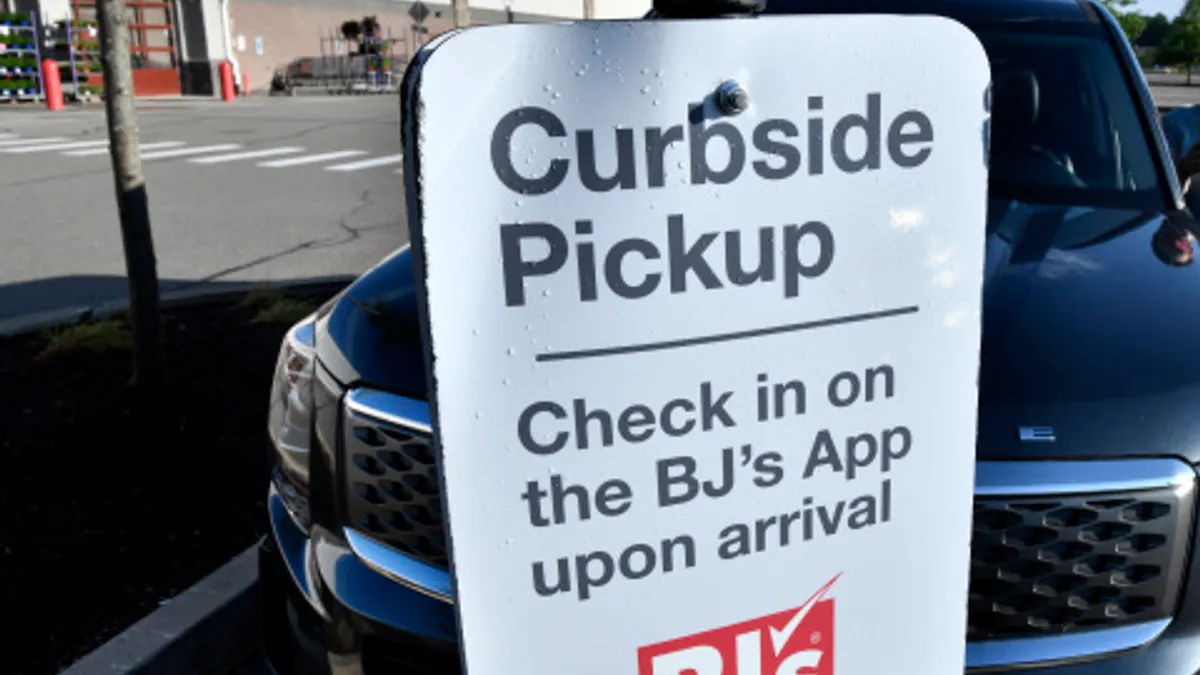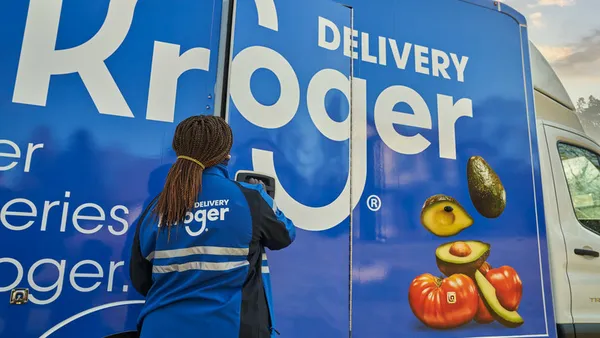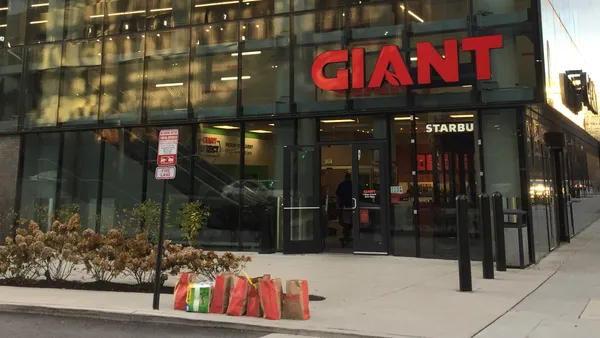Dive Brief:
- BJ's Wholesale Club posted digital sales during the second quarter that were up 4% compared with the same period in 2020 and 304% over Q2 of 2019, driven by strong customer interest in the curbside pickup service the retailer introduced last August, President and CEO Robert Eddy said during an earnings call on Thursday.
- Sales of perishables and other grocery items were a top revenue driver for BJ's in Q2. Comparable sales for those products were up in the range of 23% to 24% compared with the second quarter of 2019, while BJ's overall two-year comps grew by 21%, Executive Vice President and Chief Financial Officer Laura Felice said during the call.
- BJ's is seeing strong customer demand for grocery items as it takes aggressive steps to battle inflation.
Dive Insight:
A year after BJ's rolled out curbside pickup to its more than 200 membership warehouses, the company's decision to let customers collect online orders without entering its retail locations appears to be paying off handsomely.
BJ's delivered 50% of the pickup orders it brought in during Q2 curbside, helping the retailer leverage the tendency of its customers to have larger baskets when shopping online, Felice said during the earnings call. The company also benefited because its warehouse model is built around offering a limited number of products and encourages larger baskets, Felice added.
"This is a service we launched … sort of on a shoestring into the teeth of the pandemic. So [we're] really taking advantage of perfecting that as we've gone through the last year and really starting to advertise it a little bit to our members," Eddy said, adding that online customers "are the most engaged. They come to see us more often, their baskets are bigger. And so we're very pleased with what we're seeing from a digital perspective and particularly in curbside."
BJ's success on the digital sales front during Q2, which ended July 31, came against a backdrop of inflation Eddy characterized as the worst he has seen since arriving at the company in 2007. Rising prices have forced the company to use money it would otherwise have been able to pocket as it looks to keep prices down for customers, but Eddy said the trade-off is justified given the company's focus on maintaining and building its base of paid members.
"Our primary product that we sell isn't paper towels or perishable food. It's memberships. And the key thing about selling membership is you need to show great value," Eddy said.
Membership was up 3% in Q2 compared with the same period in 2020 and 14% over Q2 of 2019, Eddy said, driven mostly by renewals. First-year renewal rates were at historically high levels.
Prices for food at home rose 2.6% over the 12-month period that concluded at the end of July, according to the U.S. Bureau of Labor Statistics. To combat inflation, BJ's has taken steps including changing the size of packages, eliminating items and stockpiling inventory to avoid potential price increases, Eddy said. "Our suppliers should note that we will be aggressive in this area in order to maintain great value for our members," he said.
BJ's has also had to deal with widening product shortages across its assortment in addition to fighting inflation. The company is having trouble meeting demand for items like poultry, juice and pet food, and expects to face supply chain challenges for "the foreseeable future," Eddy said.
At 23%, BJ's private label penetration — which Eddy noted is key to the company's efforts to hold down prices for its customers — was the same as it recorded in Q1 and up from the 21% level the company saw in Q2 of 2020, Eddy said. The retailer hopes to increase sales of its own brands to 30% during the next few years, he added.












